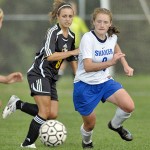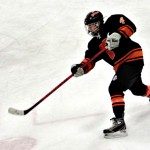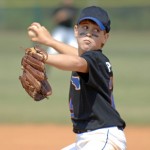Brian Schiff’s Blog
Injury Prevention, Sports Rehab & Performance Training Expert
As a parent, coach and sports physical therapist, this is a topic I am both passionate about and often confronted with. I remember growing up in a small town where I played a different sport every season. No one played year round soccer, baseball or AAU basketball – it was not even an option for those around me.
Now, I live and work in a competitive sports-minded environment where I see 13 y/o baseball pitchers with elbow and shoulder pain, 13 y/o female soccer players with ACL reconstructions, and too many adolescents suffering from overuse injuries like anterior knee pain and tendonitis. I witness coaches teaching 10 and 11 year olds to throw curve balls, hear athletes tell stories about how they are strongly encouraged or pressured to play only one sport if they want to excel and make a team, and parents who are pushing their kids hard at an early age in pursuit of college scholarships.
Is it all worth it? In a short answer – NO. In a recent article in the May/June 2013 issue of Sports Health, Jayanthi et al. performed a comprehensive search of PubMed and OVID from 1990-2011, gathering articles discussing sports specialization, expert athletes, or elite versus novice athletes including original research articles, consensus opinions, and position statements.
Click here to read the abstract
My own personal bias and opinion is that we should encourage youth to participate in multiple sports/activities and not pursue one sport or activity until they reach high school. I believe there is so much to be gained in terms of coordination, neuromuscular training, recovery and building general athleticism that gets lost with early specialization. However, I see many young athletes swept into early development programs and travel/AAU teams that naturally discourages or eliminates time/opportunities for other activities.
With that said, I will readily acknowledge that certain sports/activities (gymnastics and playing an musical instrument for example) do require an early commitment in terms of practice and skill mastery if one is to reach elite status. So, what should we as health and fitness professionals be telling our clients? How intensely do they need to train and at what age is it okay to focus on one sport?
I think we need to know what the evidence we have says and how we can best use knowledge to make meaningful change in society. In addition, we need to evaluate the mental and physical injuries that are occurring with the choice to specialize at a very young age. Consider that participation at age 6 and under has increased from 9 to 12% from 1997 to 2008.
So, for us to make a difference we need to investigate and scrutinize how we coach and train young athletes and become an advocate for their long term health as well as short term success.
Here are the key bullet points from the article I referenced above:
- Coaches are the most influential in beginning intense training and the decision to specialize
- Less than 1% of athletes 6-17 years old achieve elite status in basketball, soccer, baseball, softball or football
- Early diversification is more likely to lead to success based on multiple studies and may lead to more enjoyment, fewer injuries and longer participation
- Early diversification is more likely to lead to success based on multiple studies and may lead to more enjoyment, fewer injuries and longer participation
- Data currently suggests enjoyment of sport and intrinsic motivation predicts attainment
- Exposure is the most important risk factor for injury and there is a significantly increased risk for injury when participating > 16 hours/week
- Cumulative match exposure also carries a significant injury risk
- Prospective 10 year analysis of 481 youth baseball pitchers reveals a 3.5x increased risk for injury when pitching more than 100 innings per year
What about burnout? Consider the following:
- Swimmers who specialized early spent less time on the National team and retired sooner
- Minor league hockey players (boys) who dropped out started earlier and spent more time in off-ice training than those who continued to compete
- One retrospective review revealed that 1 out of 5 elite athletes reported injury as the reason for quitting
- In the end, the authors conclude that some specialization is necessary to attain elite skill, but the exclusion of other activities should be delayed until late adolescence.
To foster diversification, we must do a few things in sports medicine:
- Educate parents, coaches and athletes on the injury risk and facts about the impact of early specialization
- Promote the benefits of diversification in terms of joy, diminished stress to excel, athletic development and physical recovery
- Remind everyone involved not to take sports too seriously as only a very select few will move on to elite status, and instead encourage them to enjoy competing, learn to be a good teammate and reap the other rewards in sports (discipline, sportsmanship, learning to overcome adversity, working hard to achieve a goal, etc) that last well beyond a trophy presentation or game
I was just asked a few days ago by the parent of a 9 year old baseball player if I thought it was good for him to play multiple sports since he is pretty good in baseball. I encouraged this mother to have him do as many sports as he can for the next several years. Why put so much pressure on kids and expose them to increased injury risk? Every family and athlete needs to make their own personal decision, but for those who do opt for early specialization, I want to make sure I can help educate them on cross training, rest and recovery to minimize the risk for burnout and injury.
The News and Observer (our local paper here in the Triangle) recently ran a great story on overuse injuries in young athletes. I firmly believe this is one of the fastest growing injuries I see in the clinic and in many cases it is preventable. One of the biggest issues now is this commonplace idea that gifted athletes should play the same sport year-round to get ahead.
I remember growing up as a kid and playing football, basketball and baseball in the fall, winter and spring. While AAU basketball and Legion ball existed, most kids were still playing multiple sports. Over my 15 years as a physical therapist I have witnessed several of these one sport stars see their playing time and bodies take a hit due to injury.
The American Orthopedic Society for Sports Medicine (AOSSM) and the American Academy of Orthopedic Surgeons (AAOS) state that overuse injuries account for nearly half of the 2 million injuries seen among high school athletes each year. While soccer and swimming seem to send many athletes into PT, any repetitive throwing or overhead activity bears considerable risk for an eventual shoulder or elbow problem as well. Some of the common injuries I typically see are:
- Patellofemoral pain
- Shin splints
- Rotator cuff injury
- Bursitis
- Shoulder instability
- Little League elbow
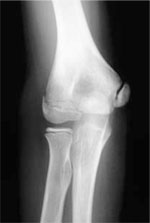
Little League Elbow (medial epicondylar apophysitis)
These injuries are just some of the most common ones I see. In the article, the reporter focused on baseball and throwing. With that in mind, consider research published in the American Journal of Sports Medicine this past February from renowned surgeon James Andrews that revealed players who pitch more than 100 innings in a calendar year are 3.5 times more likely to be injured.
He goes on to say that “these injuries are the result of a system that prepares genetically gifted athletes to play at the highest levels, but eliminates most players because their bodies cannot withstand such intense activity at such an early age.” Sadly, he told the reporter that in 1998 he performed the Tommy John procedure on 5 kids high school age or younger, while in 2008 he did the same procedure on 28 children in the same age range. This injury is usually caused by throwing too much too soon.
Consider the following data on suggested pitch counts per game (source James Andrews, MD & Glenn Fleisig, MD):
- 8-10 y/o = 52 plus/minus 15 pitches
- 11-12 y/o = 68 plus/minus 18
- 13-14 y/o = 76 plus/minus 16
- 15-16 y/o = 91 plus/minus 16
- 17-18 y/o = 106 plus/minus 16
Unfortunately, I can personally relate to this blog post and story. I was a promising young pitcher up until the point I threw my arm out in travel baseball at age 13. The pain got so bad in my arm I could barely throw a ball 10 feet. I remember the orthopedic surgeon telling me that I could not throw again the rest of the summer. The pain (and memory of it) was so bad I elected to focus on position play and not to pitch again until my senior year of high school. At that point, my arm was no longer the same as I had missed three years of practice and development. Now, I too had become one of those kids whose body was never the same.
So, as a rehab and strength & conditioning professional, I want to help educate and promote better awareness to athletes, parents, coaches, trainers, AD’s, ATC’s and anyone who is involved in the care and training of young athletes. Fortunately, people are taking positive steps to reduce overuse injuries. One great initiative is STOP – Sports Trauma Overuse Prevention and you can learn more by clicking here to visit their website.
In the end, we must continue to educate everyone that the old motto of “No Pain, No Gain” is NOT the way to handle overuse injuries as this mentality may ruin the careers of young athletes or lead to an otherwise preventable injury and/or premature musculo-skeletal damage. Pain truly is a warning signal the body gives us to detect mechanical problems and make changes in our training/activity level until we sort out the cause and solution. I hope you will join me in supporting this mission and working hard at making sports fun, safe and free of overuse injuries for young athletes of all ages in the years to come.
References – The News & Observer – May 15, 2011
Today’s blog post is about an observation and fundamental tenet of my practice today as a sports physical therapist and fitness professional. Having been in the business of rehabbing and training the human body for 15 years, I feel qualified to say I know a thing or two about training and exercise.
Perhaps one of the greatest pearls I can pass along as it relates to being a health and fitness professional involves the art of teaching. You see, I have witnessed firsthand the desire people have to attain knowledge when it comes to their bodies. Just look at how quickly and often people take the web in search of answers from the latest ab workout to the source of and remedy to their every ache and pain.
We live in a society of information overload. Unfortunately, the web, YouTube, FB, Twitter and so on give just about anyone a stage to philosophize and sound off as an “expert.” Many people who claim to know how to “train” you for this and that have little to no real world experience doing it, nor do they possess enough pre-requesite knowledge to truly be considered an expert.
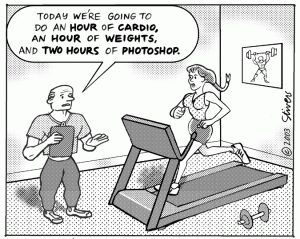
I find many people mistakenly look for what they perceive to be the most “in” or “intense” training they can find, as they believe this is the way to finally meet their goals. In reality, what they should be seeking is someone interested in teaching them how to better understand their own body and how to apply the proper training principles to it in order to bring about the desired result they are so desperately seeking.
Training typically involves putting together drills, workouts or routines to challenge clients physically. Teaching, on the other hand, is centered on educating clients how to listen to their bodies and use that feedback to appropriately adjust physical loads and exercise programming to avoid injury and make positive physical adaptations.

